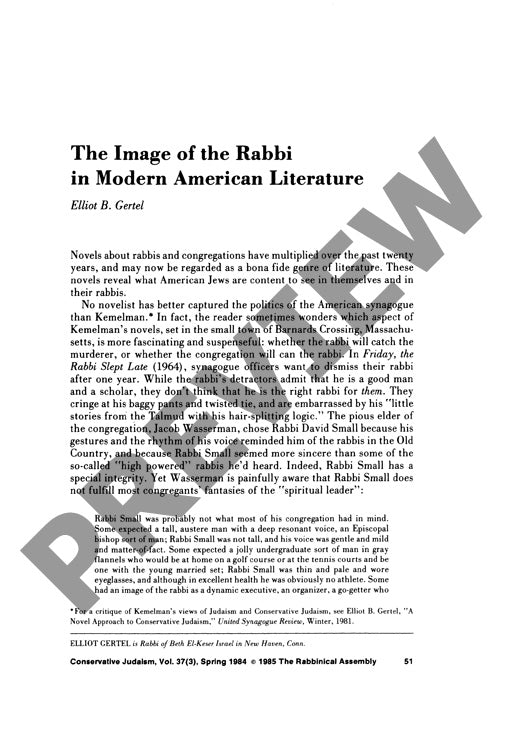The Image of the Rabbi in Modern America
Couldn't load pickup availability
American Jewish novelists have created a new literary archetype: the rabbi as a vulnerable figure torn between ancient traditions and modern demands. Through close textual analysis of seven major novels by Kemelman, Tarr, Jacobs, Tennenbaum, Greenberg, Weidman, and Leokum, distinct patterns emerge in how American Jewish literature portrays spiritual leaders and their often-fraught relationships with congregations. The genre, exemplified by Kemelman's Rabbi Small series, reveals synagogue politics where rabbis maintain their positions through external circumstances rather than genuine congregational support. Three primary archetypal patterns dominate these works: the comic hero (Tarr's Rabbi Abel), the tragic martyr (Jacobs' Rabbi Kleinman), and the conflicted traditionalist (various protagonists). These characterizations illuminate deeper tensions between "elite religion" and "folk religion" in American Jewish communities, as congregants increasingly seek secular leadership over spiritual guidance. The novels collectively suggest that American Jews project contradictory desires onto their spiritual leaders - demanding both modern adaptability and traditional authenticity - while simultaneously resisting religious authority. This literary phenomenon reflects broader cultural anxieties about Jewish identity in modern America, where rabbis emerge as dedicated but frequently misunderstood figures navigating the challenging waters of congregational politics, materialism, and evolving religious expectations.

More Information
-
Physical Description
-
Publication Information
Published 1984
ISBN
-
Publication Credits
Elliot Gertel

